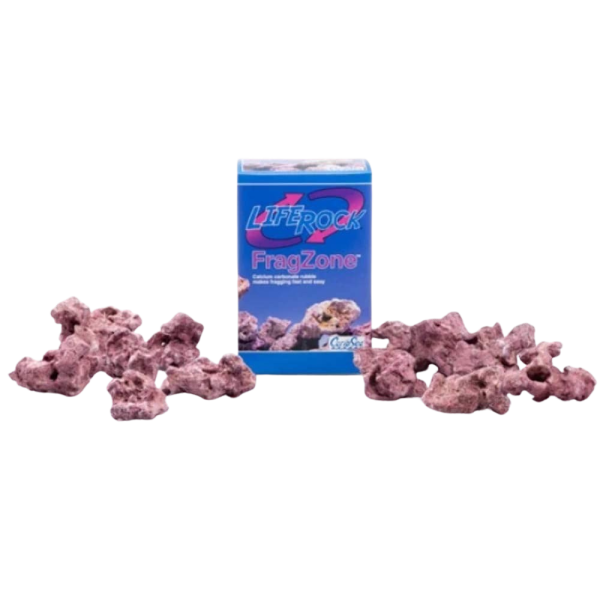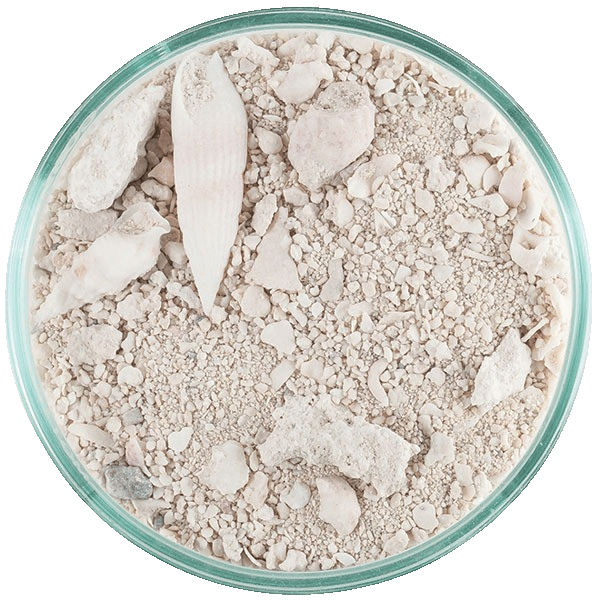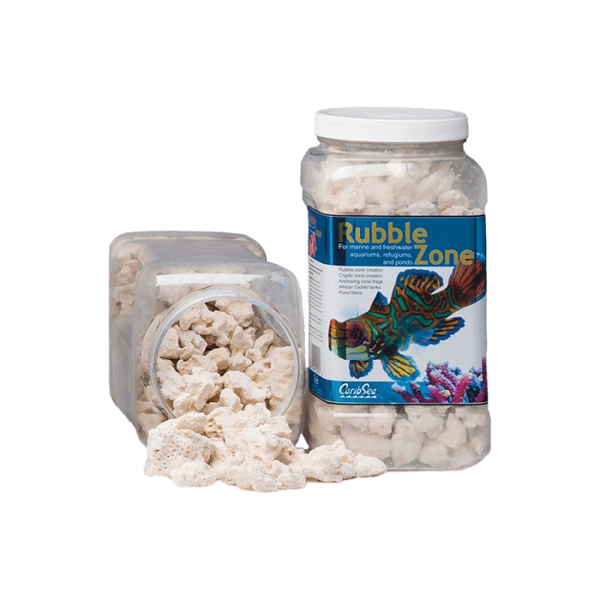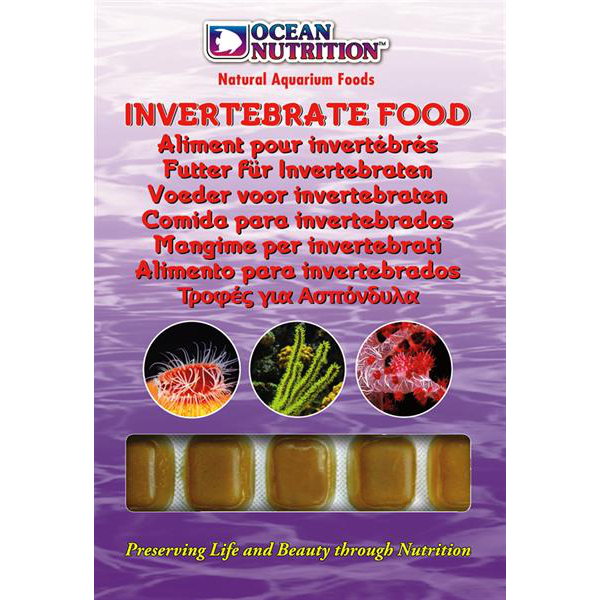SA/DT's Premium Blend 444ml
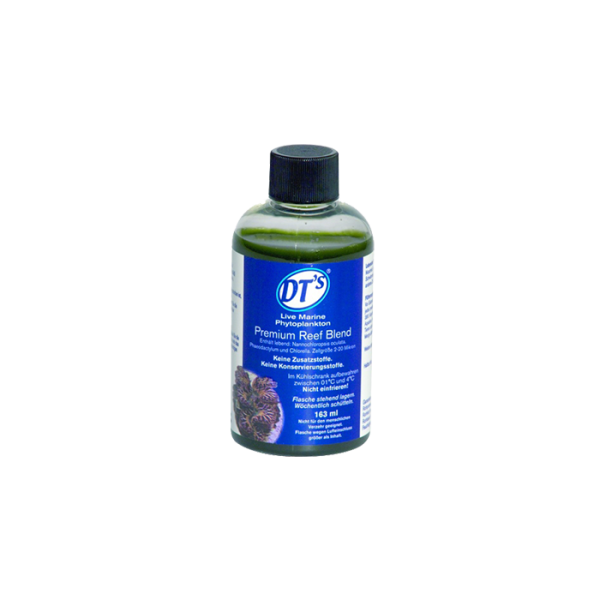
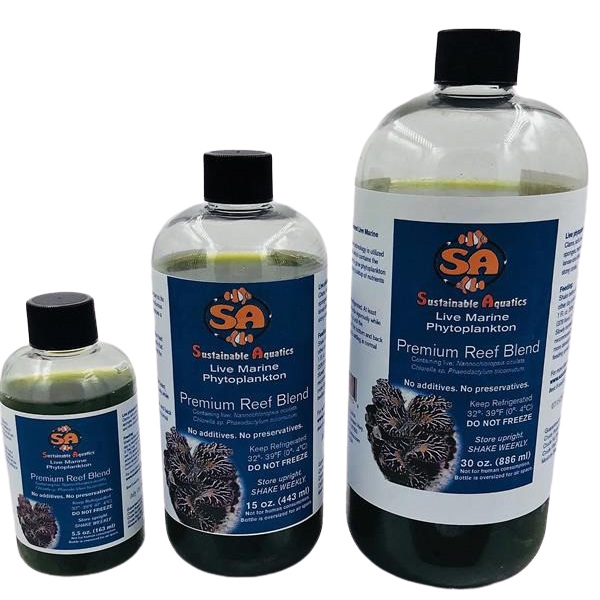
5 species live Phytoplanktum
- 5 months shelf live
- highly concentrated for maximum nutrition
- unique cell separation method
- Manufacturer:DT's Live Marine Phytoplankton
- SKU:12003
- Shelf life expiration date:01.09.2024
Specially developed for use in reef aquariums: Concentrated and purified phytoplankton of the highest quality! The best nutritional basis for the creatures in your aquarium.
Multi-purified and concentrated phytoplanktonReef aquariums are small closed systems that are extremely sensitive to nutrient overdosing, bacterial blooms and the accumulation of metals. That's why SA/DT's phytoplankton is so thoroughly purified that only the phytoplankton cells remain in clean saltwater. State-of-the-art cell separation technology is used to separate the nutrients, vitamins and metals (the components of fertiliser) from the algae. Devices like those used in dialysis to purify human blood. (Almost all other suppliers separate the algae from the fertiliser using centrifuges or filter media). This is followed by the repeated addition and removal of clean salt water until the plankton reaches the high concentration you would expect from a premium product.
Optimal nutrient content instead of "green water"Producing "green water" is easy, but not our goal. In order to offer a high quality product, every aspect of composition and production must be taken into account. For phytoplankton cultures, the intensity and cycles of lighting, temperature, nutrients and salinity are important. Only when these factors interact optimally can the nutritional content of the phytoplankton be optimised. We draw on our many years of experience in cultivating phytoplankton of the highest quality.
Maintaining nutrient quality through proper storageOnly through proper storage the highest possible nutritional value can be maintained in phytoplankton products. Feed test series have proven that the correct storage can guarantee the same nutrient content as fresh products. The nutrient value of frozen live phytoplankton remains at the same level for about 6 months according to tests. However, the phytoplankton must be stored at at least -42 °C, otherwise it becomes unusable - this is another result of the test. In drastic terms, this means: 12 months of storage in a standard household freezer, and you can also feed filtered seawater. Our claim is to ensure consistent quality! That is why DT's best-before date is limited to 5 months from bottling.
Five-species mix - complete nutrition for all reef inhabitantsThe diversity of invertebrates in the reef fascinates every aquarist. It should be noted that not every phytoplankton-eating group feeds on cells of the same size. We offer high-quality food with the SA/DT's - mixture. A composition of Nannochloropsis oculata, Chlorella species, Phaeodactylum tricornutum and Cylindrotheca fusiformis, cells of 2 - 20 micrometres. This guarantees complete nutrition for a wide variety of reef inhabitants. Practical, safe and time-saving application: You'd rather watch your reef inhabitants thrive instead of cultivating phytoplankton (of dubious quality)?! - Then SA/DT's Live Marine Phytoplankton® is just right for you: Easy to dose, ideal in content and concentration and much less time-consuming than conventional Methods.
A pure product: Food at the beginning of the food chainDirect food consumption
Nutrition is one of the fundamental elements of a healthy and vibrant aquarium. A pure and natural food like DT's Live Marine Phytoplankton ensures the survival of many species. The most important consumers of phytoplankton are mussels, soft corals, tunicates, sponges, tubeworms. But zooplankton, such as invertebrate larvae, copepods and mysids, also depend on an ideal concentration of phytoplankton. In addition, it is the most important staple food for many worms that ensure the balance in the sand bed. Stony corals, e.g. Goniopora and Alveopora, provide the best evidence of how indispensable the direct consumption of phytoplankton is.
Indirect feedingFor the successful maintenance of most reef inhabitants, such as stony corals, phytoplankton plays an essential role in the indirect food chain: phytoplankton is the food source of zooplankton. Zooplankton, in turn, is the staple food for many reef inhabitants. It serves as prey for stony corals - in the form of copepods, mysids, arthropods, juveniles and the larvae of various animals. Improving the availability and nutritional value of zooplankton, and thus ensuring a healthy reef, is directly dependent on high quality phytoplankton.
ClamsFor no other animal in the reef aquarium does phytoplankton play such an important role as for mussels. Traditionally, it has been thought that mussels cover their entire nutritional requirements with light via symbiotic algae. This widespread rumour persists to this day. The fact is that symbiotic algae only provide sugar as food. Although this covers 100 % of the animals' energy needs, it does not provide any other nutrients that are necessary for growth, reproduction, resistance, healing tissue and many other vital metabolic processes. Scientific studies on the Great Barrier Reef in Australia have shown that 75 % of all phytoplankton there is ingested and consumed by killer mussels. Younger mussels have been shown to get 65 % of their energy needs from phytoplankton, not photosynthesis. Too little phytoplankton is now considered to be the cause of the low survival rate of mussels, especially younger ones. For more information, see www.dtplankton.com. On this website we recommend the article: "Phytoplankton - a Necessity for Clams".
More biodiversityThe intensity and colourfulness of the fauna, especially the living stones, will delight anyone who has ever taken a look at a reef aquarium. To avoid turbidity, a regular addition of phytoplankton to the reef aquarium is indispensable. Since phytoplankton is the main food of many reef inhabitants, the concentration around your reef is always dropping. By adding phytoplankton, your live rock will have many colourful and interesting inhabitants, such as sponges, tunicates or tubeworms. 1 ml phytoplankton contains approx. 250,000,000 cells of Phytoplankton.
The missing component for a well functioning reef AquariumPhytoplankton is very important to marine organisms because, as a raw material producer of the oceans, it is at some point essential to the development and survival of most, if not all, marine life. Phytoplankton, which are tiny, orbiting organisms (e.g. unicellular algae, diatoms and dinoflagellates) from the kingdom of protists [Greek: unicellular organisms] (protozoa and algae), play the same role in the ocean food chain as vegetation on land. They are eaten by small creatures, which in turn are eaten by larger ones, and so the food chain continues. Many animals of the coral reef, such as clams and other bivalves, soft corals, sponges and tube worms, feed directly on phytoplankton. But even those that live only indirectly from it - most stony corals, for example - ultimately rely on the phytoplankton or other marine algae as food for the zooplankton they eat. Some essential nutrients contained in marine algae, but especially in phytoplankton, cannot be produced by animals themselves. They are therefore an indispensable part of a healthy diet.
The most important nutrients are lipoids, also known as long-chain omega-3 fatty acids. It was a milestone in the aquaculture of marine animals when it was discovered that these fatty acids form an essential part of the diet, and that without them, deficiency symptoms or growth disorders always occur. Many of the reef dwellers available in the pet trade feed on sediments and specialise in phytoplankton.
Nevertheless, until recently living phytoplankton was difficult to obtain, and often this too was unusable due to incorrect storage. The high mortality rate of most animals is therefore most likely due to the lack of phytoplankton supply, without which they simply starved to death. Even animals that have symbiotic zooxanthanesis, such as corals and killer mussels, cannot meet their nutritional needs through light alone.
The symbiotic algae only provide sugar as food, and although sugar alone can meet 100% of the energy needs of the deep, it does not provide nutrients necessary for growth, reproduction, resistance, healing tissues and other processes. For example, researchers on the Great Barrier Reef in Australia determined that 75% of all phytoplankton was collected and consumed by killer mussels. Furthermore, they found that young mussels get 65% of their energy needs from phytoplankton, not photosynthesis. Phytoplankton is of considerable benefit to most reef animals. It forms the cornerstone of the marine food chain and is an essential part of the diet of many reef inhabitants (such as tubeworms, soft corals, bivalves, tunicates and zooplankton). Yet it is rarely found in the diet of most aquariums. With SA/DT's Live Marine Phytoplankton you can now give your reef inhabitants the high quality and vital food they need.
Advantages and feeding tipsDirect consumption of phytoplankton forms the main food source for bivalves, soft corals, tunicates, sponges and tubeworms, as well as zooplankton such as invertebrate larvae, mysids, protozoa and copepods.
Many stony corals also consume phytoplankton. Whether it is digested in the process and thus brings direct benefit is by no means proven, however. Research in this field yields contradictory results. How important or unimportant the direct consumption of phytoplankton is for stony corals therefore needs further research. The most conclusive evidence for the direct consumption of phytoplankton by stony corals is provided by Goniopora and Alveopora.
If hard corals do not benefit from direct feeding, they and many other reef inhabitants do benefit from the increased availability and nutritional value of the zooplankton they ambush. In a deep sand bed and refugia, zooplankton can spread optimally, serving as an excellent and necessary food source for your corals. Read the articles: "Food Production by Design Part 1 and Part 2".
Another advantage of feeding phytoplankton is that the growing population of small animals is itself quite interesting. You can watch mini-dramas when, for example, arthopods try to prey on the mysids swarming around them. Sponges and tubeworms are colourful and interesting, but so are many other animals whose names are often only known by a zoologist who specialises in invertebrates.
For the consumption of phytoplankton to be beneficial to the animals, the cell density of the phytoplankton in the water must be higher than the nutritional value of the energy consumed in eating it. Research has shown that the concentration of phytoplankton needs to be at least 1,000 cells/ml, with increasingly higher benefits up to 10,000 cells/ml. If you follow the feeding instructions on the bottle, the proportion of phytoplankton in your aquarium will be well above 1,000 cells/ml, so your animals will have plenty to eat for some time.
However, it is practically impossible to keep the proportion of phytoplankton in a reef aquarium constant. SA/DT's phytoplankton has a cell density of at least 250,000,000 cells/ml if you feed 30 ml per 380l in an aquarium. The initial proportion of phytoplankton in the water column is about 19,800 cells/ml. It is recommended to double the proportion if you keep mussels or larger populations of phytoplankton eating animals in your reef aquarium.
Since many variables come into play in a reef aquarium, only one feeding recommendation can be made. Many aquarists feed more and more frequently than is recommended by DT/SA. Increasing the amount of food should be done in small steps so that the animals can adapt. However, the recommendation on the bottle is sufficient for most reef aquariums. Advanced and experimental aquarists should, as with any other food, closely observe the effect in the aquarium.
The importance of phytoplankton goes far beyond aquarium use.Phytoplankton is as essential for the commercial production of clams, scallops, mussels and shrimps (in the larval stage) as it is for the rearing and feed supplementation of fish larvae. There are several companies that produce live phytoplankton as a food supplement for commercial use. These products are now also offered for use in aquariums, although home aquariums are clearly different from commercial systems.
Because of its importance in aquaculture, phytoplankton receives far more attention than any other aquarium product. For example, feed test series have been conducted on the shelf life and nutritional value of various phytoplankton products. Dr. Robert Toonen from the University of California at Davis conducted these tests on invertebrate larvae. They need phytoplankton not only for growth but also for survival.
Dried phytoplankton clumps together on average to a particle size that is too large for phytoplankton eaters. The longer this product was stored, the larger the average particle size. It can also be assumed as certain that at least some nutrients are lost by drying the algae.
The decrease in the nutritional value of preserved algae depends on the temperature. The colder the product is stored, the longer it retains its high nutritional value. The reason why deep freezing is necessary is because decomposition processes of the proteins begin, albeit at a much slower rate, at temperatures above -80°C. Moreover, even at these extreme temperatures, some enzymatic processes take place.
The shelf life of this product decreases rapidly if it is not stored at temperatures far below those of a conventional freezer.
Lowest temperature under laboratory conditions: -42°C.
Lowest temperature of a normal household freezer: -20°C.
Some manufacturers even advertise that T-Iso is part of their freezer mix, even though it has such a low nutritional value. Phytoplankton are extremely fast-growing plants that consume all available nutrients in a short time. In order for phytoplankton to have the highest possible nutritional value, it must be harvested before a nitrogen deficiency occurs.
Refrigerated, live phytoplankton retains its nutrients for about 6 months. If stored unrefrigerated and there is a nitrogen deficiency, the phytoplankton will lose its nutritional value within a week, even if it remains alive. SA/DT's Live Marine Phytoplankton has a minimum shelf life of five months from Harvest.
| Nannochloropsis oculata, Chlorella sp, Phaeodactylum tricornutum, Cylindrotheca fusiformis, Nitzschia laevis |
| Storage in a refrigerator required (01°C - 04°C), as the phytoplankton will become active at temperatures above 11°C (even if only slightly). We therefore advise against using wine coolers, as they reach at best a lowest temperature of about 8°C. Phytoplankton settles at the bottom of the bottle and dies if the bottle is not moved. Shake the bottle at least once a week: turn the bottle upside down and shake it vigorously for a few seconds to stir up the cells from the bottom. After shaking, there should be no more deposited plankton at the bottom of the bottle. |
